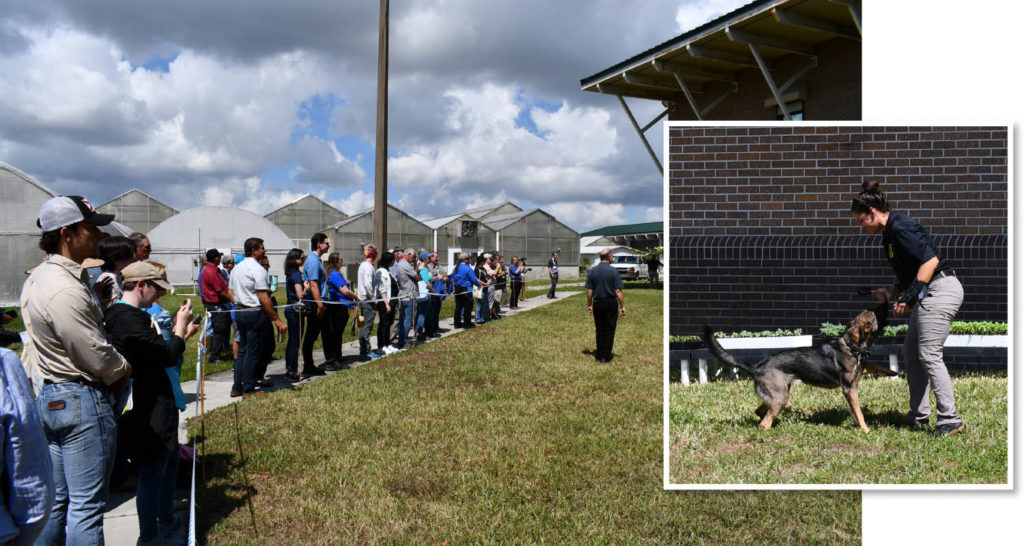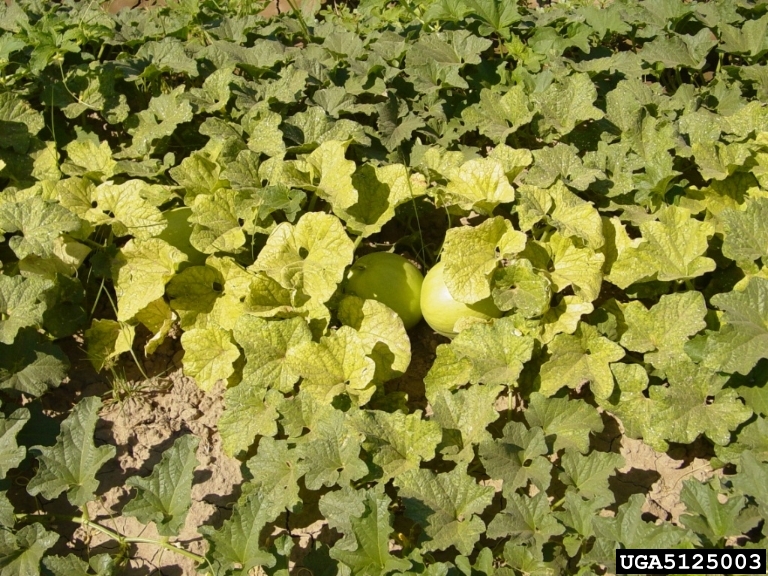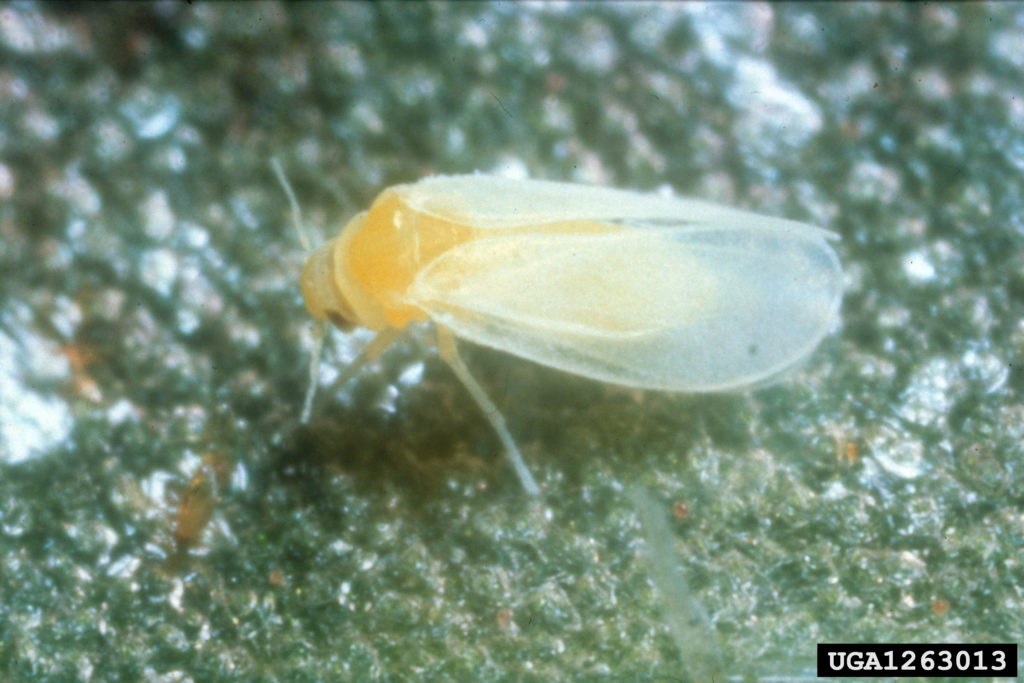
By Frank Giles
Viral disease in cucurbit crops is a major problem worldwide. In the United States, new viruses are identified regularly that affect important specialty crops. This has become such a problem that the Emerging Viruses in Cucurbits Working Group (EVCWG) was established in March 2022.
The group was formed after a discussion during the Plant Health event hosted by the American Plant Society in 2021. Subsequent meetings led to a grant proposal for the working group, which was funded by the Southern IPM Center. The group is currently made up of 24 members representing different cucurbit crops, disciplines and sectors.

Photo by Mark Matheron
Introductions and Threats
“Since 1998, an average of one new whitefly-transmitted virus has emerged in the United States every four to five years,” says William Wintermantel, a co-chair of the EVCWG and a research leader with the U.S. Department of Agriculture (USDA) based in California. “Once a virus is introduced into the United States, within a few years it spreads to other cucurbit-growing regions in the country.”
The working group is keeping close tabs on viruses that have not yet made it to the United States. The watchlist includes the tomato leaf curl New Delia virus, squash leaf curl China virus and cucumber vein yellowing virus.
Watching Whitefly Populations
The whitefly is a key spreader of viruses. The sweet potato whitefly (also called the silverleaf whitefly) is generally the most problematic. According to Alton (Stormy) Sparks, an entomologist with the University of Georgia, many recall 2017 as a particularly bad year for the pest. Clouds of whiteflies could be spotted in some fields.

Photo by W. Billen
“That year, we had populations earlier than normal, they were more widely distributed, and populations were very high,” Sparks says. “Last year, the populations were fairly normally distributed. The primary problems in Tift and Colquitt counties occurred a little later in the year than normal but did reach very high densities.”
A variety of conditions can influence how bad the population can be during the season. Cold winters can help knock them back some, but weather in spring and fall can have a large influence, too.
“Whiteflies loves hot, dry conditions. We can go from very low to very high populations in a relatively short time with the right conditions,” Sparks says. “After cold winters (particularly with an early freeze, which means whiteflies must live longer on fewer hosts), it helps reduce overwintering numbers, which generally also leads to populations building later in the season.
“Pressure fluctuating from year to year is greatly influenced by weather during the year, particularly hot, dry conditions. In addition, tropical storms can knock down adult populations, etc. Year-to-year fluctuations are also influenced by management of whitefly across multiple commodities. The best example is when cotton producers do a good job of managing whiteflies, fall vegetables generally have less pressure or later pressure. And what we do in fall vegetables influences issues in winter vegetables in terms of populations.”
Sparks says while there are scouting thresholds for whitefly in South Georgia, they are not used routinely because whiteflies are either not really present in the spring or summer, or they are present in overwhelming numbers.
“In areas where we experience consistent problems in the fall, we treat them somewhat preventatively, otherwise we would get behind quickly and never catch up,” Sparks says. “In other areas (and when a virus is not involved), the threshold is around five adults per leaf. But, for example, in squash in bad whitefly areas, you can easily find 100+ adults per leaf at the one-leaf stage.”
In Georgia, cucurbit leaf crumple virus and Sida golden mosaic virus are two of the more problematic whitefly-transmitted diseases.
Better Diagnostics
Scouting for whiteflies is easy. That’s because often when you turn a leaf over, you get a face full of flies. But diagnosing the viruses the pests spread can be challenging because symptoms can be difficult, if not impossible, to identify visually. And multiple diseases can be present in a field and even in individual plants.
Scott Adkins, a research virologist and director of the USDA Agricultural Research Service U.S. Horticultural Laboratory in Fort Pierce, Florida, is a member of the EVCWG. He has been working with fellow researchers to develop better virus diagnostics.
Their research has focused on identifying diseases in watermelon. The team published research on three common viral diseases in the Southeast — squash vein yellowing virus, cucurbit leaf crumple virus and cucurbit yellow stunting disorder.
The research showed that laboratory testing with common tools could identify and distinguish virus types. But Adkins says this is not practical because sampling and time constraints don’t allow growers to make real-time management decisions in the field.
“There is an opportunity for rapid diagnostic testing to enable real-time management decisions while avoiding the laboratory sampling issues,” Adkins says. “Enter detector dogs. Before you laugh, there is precedent using dogs to detect bacterial pathogens that cause citrus greening and citrus canker.”
Disease-Detecting Dogs
With funding from a USDA grant, Adkins’ team, along with the help of F1 Canine, trained two dogs to identify squash vein yellowing virus. The goal was to utilize the dogs at three points in the growing cycle to alert growers of the presence of the disease. This would allow them to make timely management decisions to help reduce disease impact in fields.
The first point is in the fallow, pre-season period. The dogs are deployed in fields to identify weed hosts, which may harbor the disease. The dogs were able to identify Balsam apple carrying the disease in the field. With this knowledge, growers could deploy weed management to help remove the disease reservoir in the field.
The second point in the season is at the transplant stage. Dogs are trained to alert on diseased transplant plants so growers can avoid planting those into the field.
The third point is early season in the field. Dogs identifying diseased plants would allow growers to remove those plants before the disease spreads to other parts of the field or into feeding whiteflies.
The tests revealed that the dogs were extremely accurate at identifying the squash vein yellowing virus, above 99% in most cases, which is on par with laboratory testing. When the dogs find a diseased plant, they sit down by it. Their reward for correct identification is praise from their trainer and a few moments of play with their favorite toy.
Adkins says detector dogs could be an effective way for growers to be timelier in management of viral diseases. This could be a key component in neighborhood-wide pest management programs where growers cooperate with coordinated whitefly spraying to help stop the spread of diseases.
Visit ecucurbitviruses.org for more information on cucurbit viruses.









